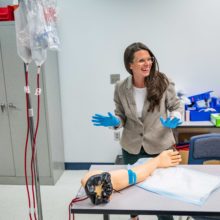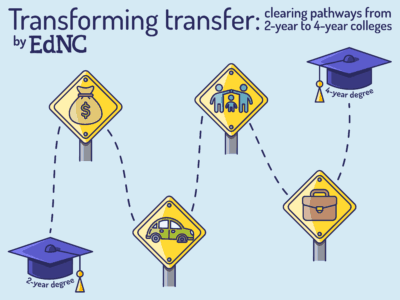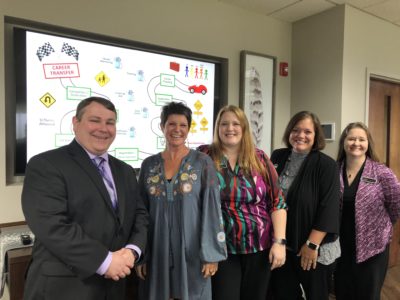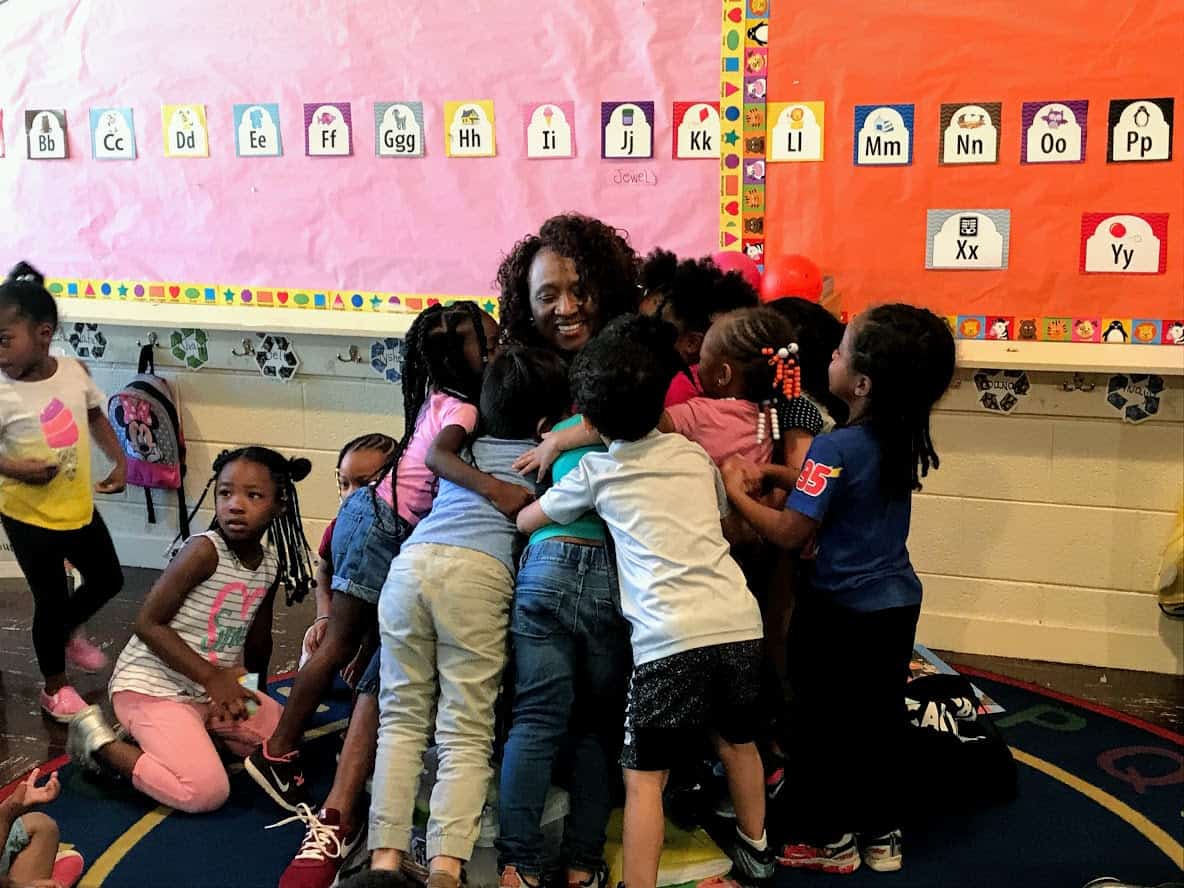
This article is part of the Solution Seekers series. We are republishing this story with a new video explainer on this particular collaboration. Find the full series here.
In 2003, Rowan County and surrounding areas lost nearly 5,000 jobs in the largest single-day layoff in North Carolina history when the textiles maker Pillowtex Corp. shut down. Seventeen years later, Rowan County’s elected officials and education leaders are rethinking how they work together in hopes of improving the lives of residents and businesses.
Fixing the economy does not happen overnight, Greg Edds, chair of the Rowan County Commission, said. “A lot of folks just think [the economy] will come back and it will all be okay,” he said. “Maybe that was the case in the past, but it just isn’t the case now with advancing technology. Until there’s active purposeful leadership that looks at making not only systemic changes, [but also] cultural and attitudinal changes, we are going to be stuck where we were.”
To make those changes, Edds knew that aligning educational efforts was key. About a year ago, Edds challenged Rowan County education leaders to sit down as a group and discuss how they were all going to work together to align educational attainment and build an ecosystem in which a talent pipeline could flourish. He asked them:
“How do we develop a seamless system of education in Rowan that benefits the citizens of the county and brings us all to the table so that we work together in a very integrated way?”
This led to the formation of the Rowan County Education Collaborative, a group that has worked for the past year to align educational attainment and workforce development by creating an agile talent framework that promotes prosperity for businesses and residents of Rowan County.
The group, consisting of leaders from Rowan-Salisbury Schools, Rowan-Cabarrus Community College, Catawba College, Livingstone College, and elected county officials started meeting every other week for two hours. Top-level executives from these systems made a commitment to sit together and discuss what they could achieve. As Craig Lamb, vice president of corporate and continuing education for Rowan-Cabarrus Community College shared, “The idea of an educational ecosystem led us to discussions around how we fit into each other, not just that we coexist.”
One of the terms the group used early on was “silos of excellence.” They were aware of the high quality of their various institutions, but the quality of interactions with each other was fairly low. “Friendly, but not meaningful,” Lamb described. “The various educational institutions were doing good things, but no one was connected,” he said.
And so, in the beginning stages, the Rowan County Education Collaborative developed five major areas that were meaningful to the educational institutions, to Rowan County, and to the business communities.
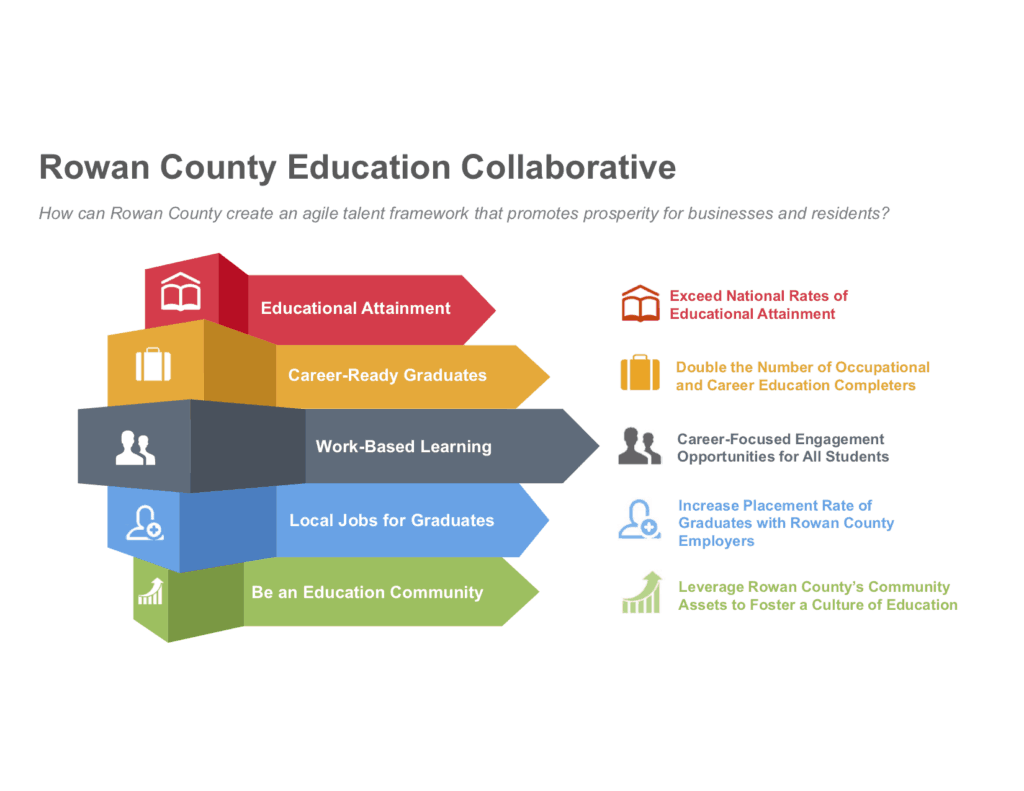
The Rowan County Education Collaborative focuses its time and energy on the five areas represented in the chart above. They believe these are the kinds of initiatives and goals that will serve their mutual interest — making it more likely that they’ll continue working together.
To carry out these goals, the collaborative appointed two task forces. The first is a long-term, longitudinal data team that will track students between institutions. The group will work with the K-12 system and higher education institutions to understand what happens to students once they graduate high school in order to improve student outcomes.
The second task force is a marketing team that will be responsible for telling the story of the collaborative within the community. The marketing team will focus much of their efforts on the last goal—be an education community. Their aim is to tell the story of what’s happening inside the meeting room in a way that energizes businesses, residents, and citizens to think more about education and embrace educational achievement. Lamb said there will be additional task force teams rolling out soon.
In an effort to push towards the state’s attainment goal, a sub-group of the collaborative, affectionately referred to as the provost group, convenes to integrate Career and College Promise, Career and Technical Education, the K-12 school system, and early childhood education and their centers. Additionally, the group writes transfer agreements between colleges and assesses how to align each school’s curriculum.
An outcome of this effort is the recent transfer agreement between Rowan-Cabarrus Community College and Catawba College. Signed on January 27, 2020, the 50 different career pathways offered in the agreement will allow graduates from Rowan-Cabarrus to transfer to Catawba College with junior standing. Examples of pathways include accounting, business, birth-Kindergarten education, and computer science. Soon, Livingstone College will work with the provost group to complete transfer agreements between their college and Rowan-Cabarrus Community College.
Dr. Michael Quillen, vice president of academic programs for Rowan-Cabarrus Community College, acknowledged that working with the provost group has broken down traditional barriers between higher ed institutions. “It’s kind of a different way of doing this because usually we work on our stuff, they work on their stuff, and if it looks good and it sort of matches up, then thumbs up, but that’s not the approach we are taking.”
I recently attended one of the regular meetings of the Rowan County Education Collaborative to discuss the group’s efforts throughout the past year. As they reflected on their year together, I asked them about the challenges they had experienced along the way.
“Trying to figure out how to come together and create a better education process for everybody and to train people for jobs, that’s always a challenge,” said Jim Greene, vice chair of Rowan County Commission.
Both Lamb and Lynn Moody, superintendent of Rowan-Salisbury Schools, pointed out that the time commitment for this type of group is often difficult but worth it. “Having the chief officers of these institutions agreeing to two hours, two weeks a month first thing on Wednesday morning has the potential for real conflicts with other work, yet they made that commitment,” said Lamb.
There have been moments throughout the year that the group asked each other how devoted they were to this idea, to this collaboration. As the facilitator for the group, Lamb said asked them, “What do you want to do?” And they all said, “Let’s keep going. We have more work to do.”
The collaborative overcame these challenges because of the interpersonal commitments they made to each other. “These are not just institutions to institutions or systems to systems. This is president to president,” Lamb said.
“We are going to figure this out because we are better together than we are on our own.”
As the collaborative continues to work towards educational alignment and attainment, they recognize that they’ve moved from a constituency-based approach to a community-based approach.
“Eight years ago, this type of collaboration would not have happened,” said Carol Spalding, president of Rowan-Cabarrus Community College. “In the past, everyone let everything we disagreed on and historic tensions prevent us from doing anything about the things we did agree on,” added Brien Lewis, president of Catawba College.
Both Spalding and Moody credit the leadership of the county commissioners for making this happen. “For a collaboration like this to work, you have to build relationships and have elected officials who see the bigger picture,” Spalding said. “Leadership makes a huge difference,” Moody echoed. “You could do this without a county commissioner chair who takes this on, but it would be much harder.”
Now, when these leaders come to the table to talk about the collaborative efforts, their own needs are not always the first thing that comes to mind. When they are in the room together, the community comes first.
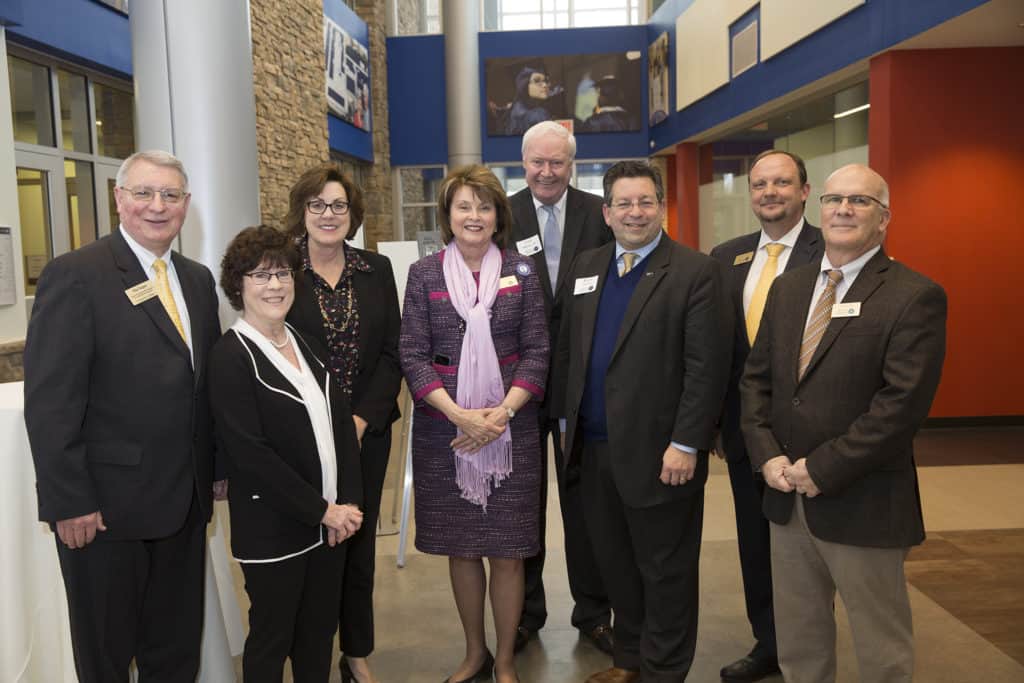
These leaders also recognize that increasing educational attainment and aspirations in the county is a large task, and they will get there by taking small steps.
“Sometimes groups get hung up on boiling the ocean, getting the whole thing going at once, and trying to achieve the big thing,” said Lamb. “We don’t have huge pots of resources, and we know that incremental growth or movement is what we are about.”
In a sign that the county supports their efforts, voters approved a $45 million bond referendum to allow Rowan-Cabarrus Community College to expand programs directly related to Rowan County’s workforce and economic development needs. Specifically, the bond will allow Rowan-Cabarrus to develop a first-of-its-kind fire training facility, expand instructional spaces for its welding technology program, and support dual credit programs for high school students in career and technical education.
As they work towards their goals, members of the group see the potential impact for their individual systems and institutions.
“Improving the educational aspirations of people in this community and training and educating the workforce is our goal,” said Spalding. “We can do it a lot better and easier with the group of people sitting at this table.”
As private colleges, Catawba College and Livingstone College know that the collaborative’s work will not only increase their enrollment pipeline but will also force their institutions to think about what their schools are producing. Pete Teague, special assistant to the president for community development at Livingstone College pointed out, “It’s not just that students are educated well, but what can they actually do when they graduate? What are they prepared for, and how does that match the jobs that we have now and the jobs that are coming? We are rethinking what needs to be done.”
In the K-12 system, the collaboration has prompted an evaluation of student and community needs. “Members have been able to think about their existing programs, identify the bright spots, and bridge the gaps between student interest and community needs,” said Dr. Holly Pore, director of career and technical education for Rowan-Salisbury Schools.
Participating in the Rowan County Education Collaborative is optional, but the members don’t see it as an add-on. “We are trying to figure out how we change the culture and how we bring about economic opportunity for the group of folks who needs hope,” said Edds.
“If it’s not everyone around this table, then who could it possibly be in this community? And when is another time you would want to do it? So it’s this group, and it’s now.”
